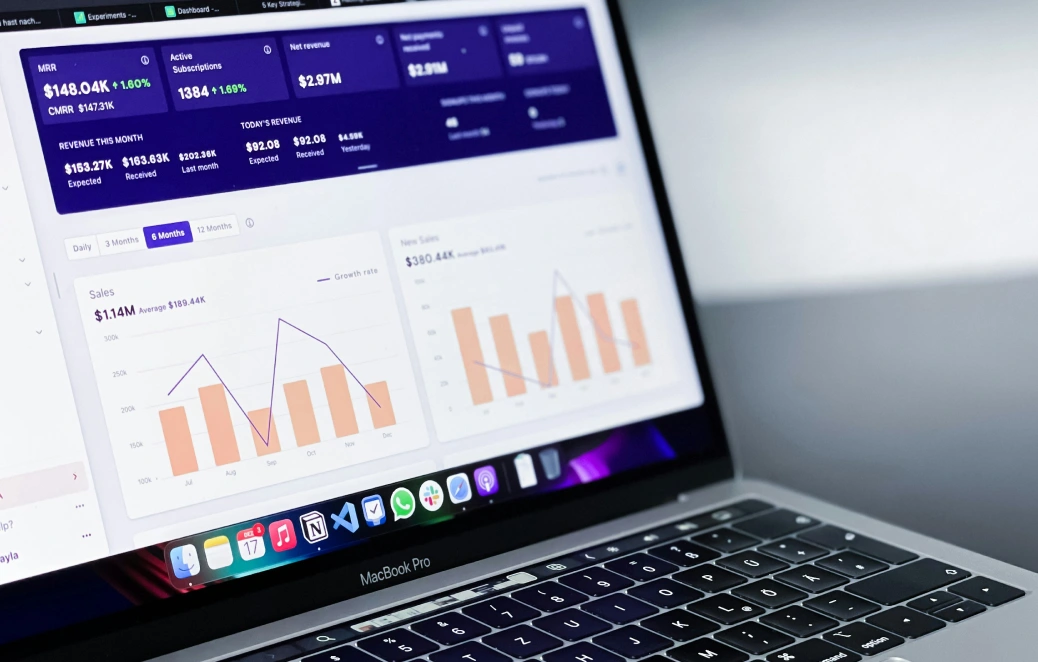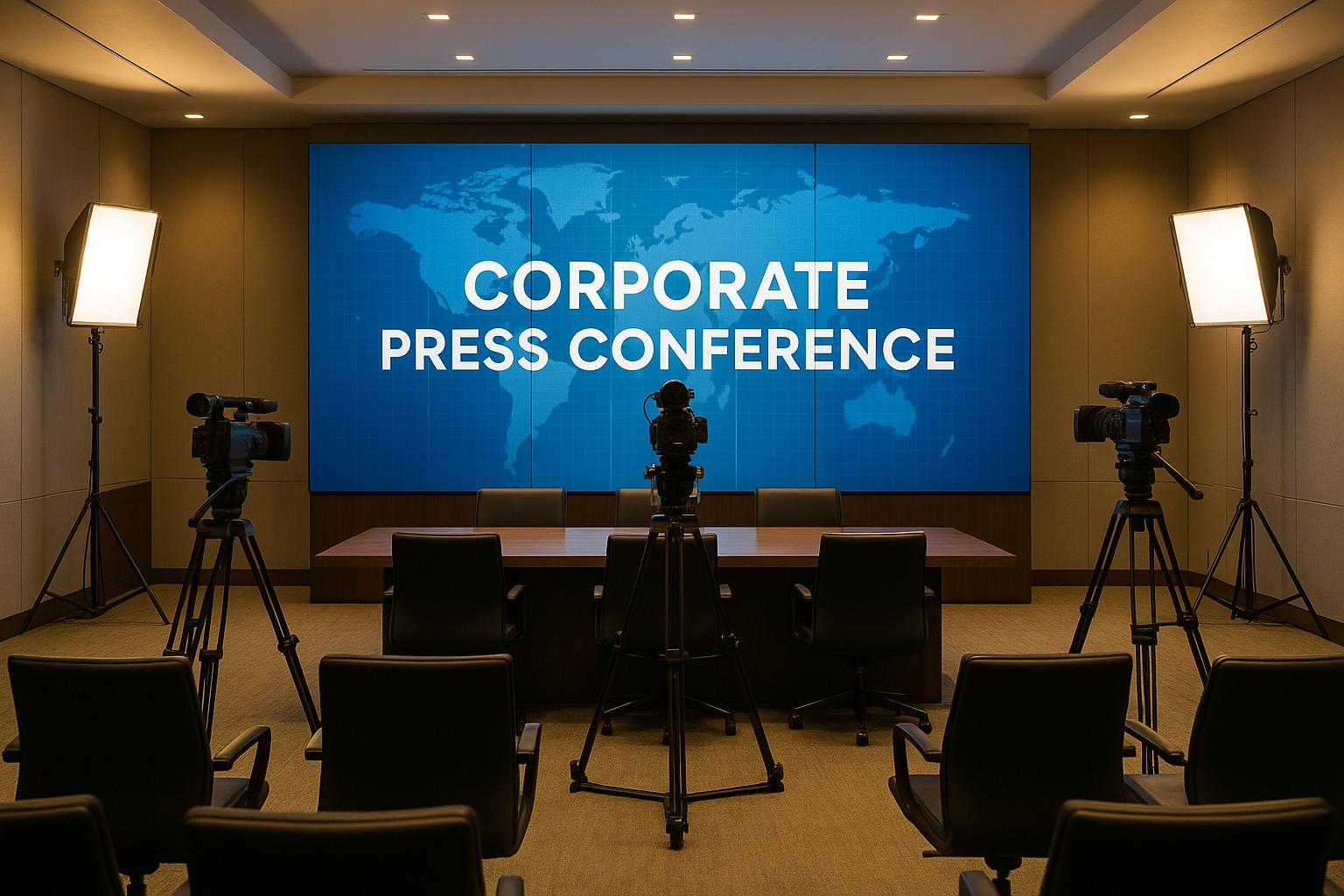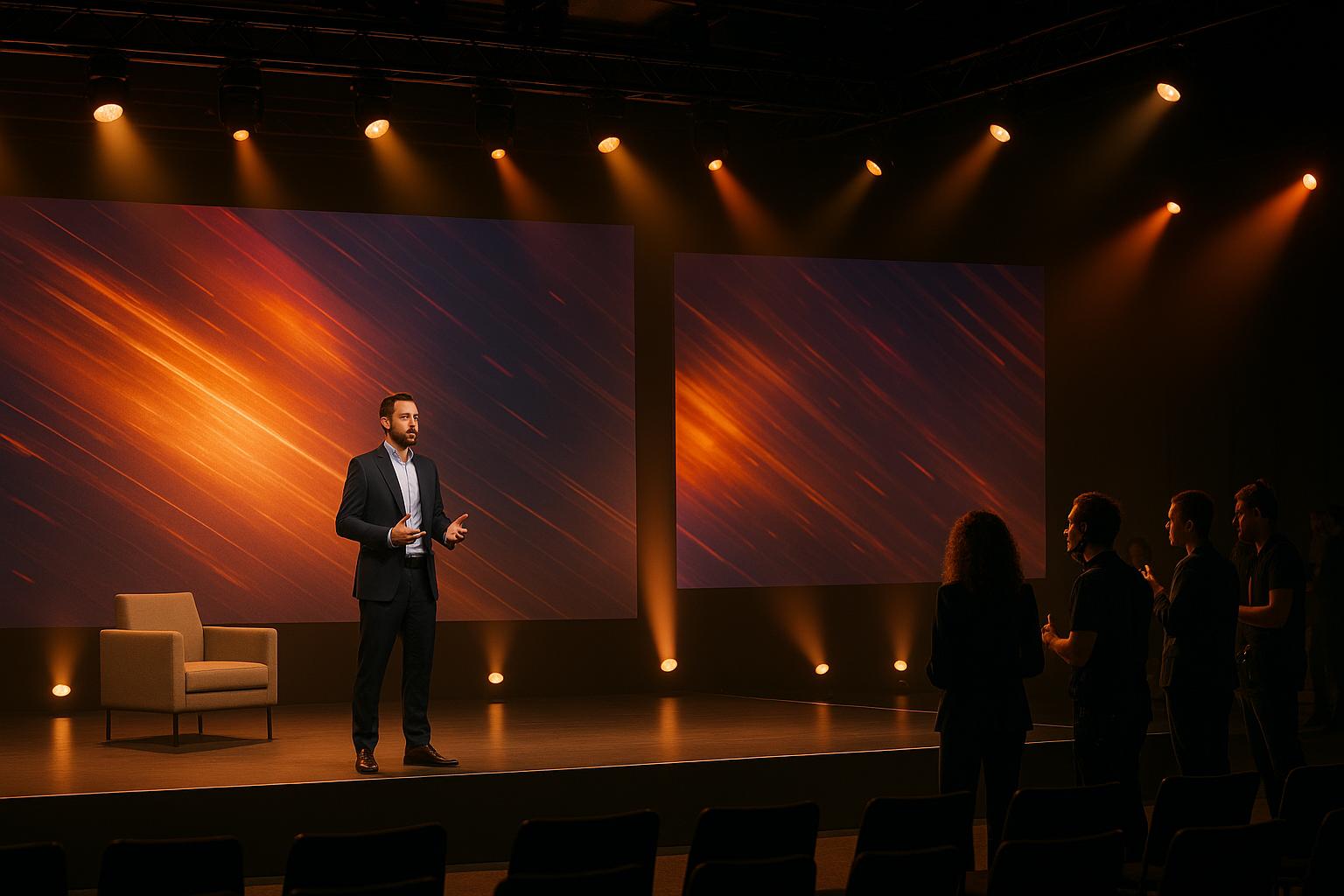Tips To Plan And Execute A Global Corporate Broadcast

Chief Executive Officer

Global corporate broadcasts are a powerful way to connect employees, stakeholders, and customers worldwide. They streamline communication, save costs compared to in-person events, and boost engagement through interactive features like Q&A and polls. However, executing a successful broadcast requires careful planning to address challenges such as time zones, diverse audience needs, and technical reliability. Here's what you need to know:
- Set Clear Goals: Define specific, measurable objectives that align with your organization's priorities (e.g., employee engagement, product launches, or shareholder updates).
- Understand Your Audience: Account for language preferences, cultural differences, and varying internet speeds to ensure your message resonates globally.
- Ensure Compliance: Follow legal and regulatory requirements like GDPR and accessibility standards to avoid risks.
- Invest in Technology: Use high-quality AV equipment, reliable live streaming systems, and backup plans to prevent interruptions.
- Manage Time Zones: Schedule broadcasts to maximize participation across regions and clearly communicate event times.
- Engage Viewers: Include multi-language options, live Q&A, polls, and chat features to make your audience active participants.
- Prepare for Issues: Test systems thoroughly and have contingency plans for technical problems.
Crafting the Perfect Event: Step-by-Step AV Planning Guide for Flawless Execution
Core Requirements for Global Broadcasts
To ensure a successful global broadcast, start with a solid foundation: define your objectives, understand your audience, and comply with regulations. These steps shape every decision you make, serving as the backbone of your broadcast strategy.
Setting Clear Broadcast Goals
Every effective broadcast begins with well-defined, measurable goals that align with your organization's objectives. Whether you're aiming to increase employee engagement during a company transition, share quarterly results with shareholders, or introduce a product to a global audience, having specific goals is key.
"Before you start live streaming, set clear goals for what you want to achieve. This can help you create more focused and effective content. Your goals should be specific, measurable, and relevant to your company's objectives." - Noah Sargent, Writer, Corporate Streams
These goals not only guide your planning but also provide tangible benchmarks to evaluate success. They ensure your broadcast is more than just an information dump - it becomes a tool to drive action. For example, are you encouraging employees to enroll in a training program? Do you want investors to explore your latest quarterly report? Or are you hoping customers will pre-order a new product? Defining these actions helps you create focused, impactful content.
Once your goals are in place, the next step is understanding the unique characteristics of your global audience.
Understanding Your Global Audience
A global audience brings diverse needs, preferences, and challenges that differ from those of a local audience. Addressing these differences is critical to delivering a message that resonates.
Language needs extend far beyond basic translation. While English might be your default language, many viewers may not be fluent. Consider adding subtitles or offering simultaneous interpretation to make your content accessible to everyone.
Cultural awareness is equally important. A presentation style that works in one region might not translate well in another. For instance, while direct communication is appreciated in Germany, it could be seen as overly blunt in Japan, where an indirect approach is often preferred. Even colors, gestures, and the structure of your presentation can carry different meanings depending on the audience. Being mindful of these nuances ensures your message lands as intended.
Technical accessibility can vary widely. While your headquarters might enjoy high-speed internet, some viewers may only have access to slower connections. This affects decisions about video quality and the use of interactive features. Additionally, time zone differences must be factored in to maximize audience participation.
Meeting Legal and Compliance Requirements
Broadcasting globally means navigating a maze of regulations, and failing to comply can lead to serious consequences.
To avoid legal pitfalls, ensure your broadcast adheres to international regulations like GDPR, CCPA, and ADA, covering data privacy, broadcasting standards, and accessibility.
Content compliance is particularly complex for financial communications. If you're a publicly traded company, investor updates and earnings calls must meet securities regulations in every market where your stock is traded. This often involves legal reviews of your content and maintaining detailed records of what was said and when.
The best strategy? Involve your legal team early in the planning process. They can identify relevant regulations and help integrate compliance measures into your broadcast from the start, minimizing risks and ensuring everything runs smoothly.
Selecting AV Technology and Infrastructure
The technology you choose can make or break your global broadcast. Poor sound, low-resolution video, or stream interruptions can turn away your audience and weaken your message. The solution lies in selecting equipment and systems that meet the demands of a global audience while maintaining professional quality. Let’s dive into the key AV tools that make a smooth broadcast possible.
Choosing AV Production Tools
Your equipment needs to deliver high-quality results across all devices. This means investing in the right cameras, microphones, and lighting systems. Here's what to focus on:
- Cameras: Go for reliable, consistent cameras that capture sharp 4K video. Multi-camera setups are great for keeping audiences engaged by switching angles during longer presentations. Also, prioritize cameras with strong low-light performance, as lighting conditions can vary across locations.
- Audio: Believe it or not, audio quality often matters more to viewers than video. Poor sound will drive people away faster than a blurry image. Invest in wireless microphones with backup features to prevent audio dropouts. Adding an audio mixing board allows you to fine-tune sound levels in real time.
- Lighting: Lighting systems should be versatile. LED panels that let you adjust brightness and color are a smart choice, especially when broadcasting from different locations. These tools help maintain a polished, professional look regardless of the setting.
Always have backup options for critical components to ensure uninterrupted quality during your broadcast.
Building Reliable Live Streaming Systems
Your live streaming setup determines whether your message reaches your audience or gets stuck in buffering limbo. A few key elements can make all the difference:
- Content Delivery Networks (CDNs): CDNs distribute your stream across servers worldwide, minimizing delays and making your broadcast more reliable for a global audience.
- Bandwidth: The larger your audience, the more bandwidth you’ll need. For instance, streaming to 10,000 viewers at once requires significantly more upstream bandwidth than a small meeting. Redundant internet connections, such as a mix of fiber and cellular, can prevent service interruptions.
- Streaming Protocols: Low-latency streaming is crucial if your broadcast includes interactive elements like live Q&A sessions or polls. A delay of 3 seconds feels engaging, whereas a 30-second delay can frustrate your audience.
- Adaptive Streaming: Your encoder should support multiple video quality levels. This ensures viewers with slower internet connections can still participate, while others enjoy high-definition video.
- Global Reach: Plan your CDN coverage to ensure smooth streaming across regions. For example, what works well for viewers in New York might struggle in Singapore or London without proper CDN setup. Test your system from multiple international locations before the big day.
When paired with strong infrastructure, working with experienced partners can elevate your broadcast even further.
Working with Corporate Optics
Corporate Optics provides end-to-end AV production services tailored for global events. From initial design to live streaming and post-event analytics, they handle it all.
Their Emmy Award-winning production team brings the same level of professionalism you'd expect from broadcast television to corporate events. This includes custom staging solutions and intelligent lighting systems that adapt to different venues.
Their live streaming infrastructure is built for reliability, offering robust CDN coverage and features like audience engagement tools that work seamlessly across time zones and devices. After the event, their analytics tools help you understand how audiences interacted with your broadcast, offering insights into regional preferences and engagement.
Corporate Optics also leverages AI-powered event production through their partnership with prompts.ai. This technology simplifies tasks like agenda planning and real-time audience interaction, making even complex global broadcasts easier to manage.
Their pricing is flexible, scaling to meet the needs of your event - whether it’s a small announcement or a high-profile product launch reaching thousands of viewers worldwide. Their solutions are designed to address the unique challenges of global corporate communications, ensuring your message is delivered with precision and impact.
Managing Time Zone Challenges
In addition to having reliable AV systems, managing time zones effectively is crucial for a smooth broadcast. Time coordination plays a big role in ensuring success - there’s no one-size-fits-all time slot. Striking a balance between different regions helps maximize participation. A well-planned schedule lays the groundwork for clear communication and strong engagement.
Building a Time Zone Schedule
Start by mapping out your audience's locations to pinpoint their time zones. Tools like World Time Buddy let you compare multiple locations side by side, making it easier to identify ideal time slots within standard business hours (typically 9:00 AM to 5:00 PM). Another helpful tool is SavvyCal's Time Zone Converter, which provides a quick way to see how a specific time aligns across major cities worldwide.
When planning, include all key regions where you anticipate significant attendance. Don’t overlook secondary markets that might also play a role in your broadcast’s success.
Clear Schedule Communication
Once you’ve nailed down your broadcast time, it’s essential to communicate it clearly. Start with your primary time zone and include conversions for other regions. For example:
"Join us Tuesday, March 15, 2:00 PM EST (11:00 AM PST, 7:00 PM GMT, 4:00 AM JST+1)."
Leverage scheduling tools like Google Calendar, Zoom, or Calendly to automatically adjust for local times and daylight saving changes. Share your schedule across multiple platforms:
- Announce the event with a complete time zone breakdown.
- Follow up with reminder emails that include local times.
- Send a final confirmation as the event date nears.
If the event falls outside standard business hours for certain regions, acknowledging this in your messaging shows consideration for your global audience.
Finding the Best Event Times
Review your audience distribution to pick a time slot that works for the largest number of participants during standard business hours. While it may not be possible to accommodate everyone perfectly, aim for the times that best suit your key regions, keeping in mind that some compromises might be necessary.
sbb-itb-ae35a94
Building Reliable Broadcasts and Backup Plans
Technical hiccups can throw even the best-planned global broadcasts off track. That’s why having solid backup systems and contingency plans is non-negotiable. A well-thought-out strategy ensures you protect your investment and keep your professional reputation intact. The key? Build layers of redundancy before issues arise.
Setting Up Backup Systems
Start by ensuring your internet connections are more than adequate for your streaming needs. Always have a secondary connection in place, sourced from a different provider - options like cellular hotspots, satellite links, or dedicated backup lines work well as failover solutions.
Backup encoders are another must-have to avoid single points of failure. Keep spare encoders, cameras, and audio equipment at the ready, pre-configured with the same settings as your primary gear. Store these backups near your main setup for quick access.
Power disruptions can be just as damaging. Use an Uninterruptible Power Supply (UPS) to keep your equipment running long enough to either switch to an alternative power source or gracefully end the broadcast. For high-stakes events, portable generators add an extra layer of security.
Companies like Corporate Optics specialize in integrating these backup measures into their broadcast solutions. Their technical teams are skilled at creating contingency plans that help maintain high-quality broadcasts, even when things go sideways.
Testing Before the Event
Rehearsals are your best friend when it comes to avoiding surprises. Conduct full end-to-end tests, including remote presenter rehearsals, to ensure everything works as planned. Use the same equipment, internet connections, and streaming platforms you’ll rely on during the event. Check audio and video quality, streaming stability, and any interactive features you plan to use.
For remote participants, schedule technical checks ahead of time. Verify their internet speed, audio clarity, lighting, and establish backup communication methods. Provide clear instructions for joining the broadcast and set up alternative contact options in case of connectivity issues.
Load testing is another critical step. Simulate live audience conditions by having team members join the test stream from various devices and locations. Monitor bandwidth usage, server performance, and video quality to spot potential weak points. Document the results and create detailed checklists that include troubleshooting steps and key technical support contacts.
These rehearsals don’t just test your setup - they also integrate with your backup strategy, giving you confidence that everything will run smoothly on the big day.
Preparing for Technical Problems
Even with all precautions, issues can still arise. That’s why it’s crucial to have clear protocols in place for handling unexpected problems.
Set up dedicated communication channels to coordinate your team during technical glitches. Have contingency messages ready to keep your audience informed if something goes wrong. Assign specific roles to team members and outline escalation procedures for situations that require more than basic troubleshooting.
Prepare backup content to keep your audience engaged during interruptions. Options like pre-recorded videos, presentation slides, or holding screens can fill the gap if the live feed is interrupted. Create content in varying lengths to match different downtime scenarios.
Keep an updated contact list for all your technical vendors, internet providers, and streaming platform support teams. Include after-hours emergency numbers and escalation contacts, and test these lines before your event to ensure they’re reliable.
Finally, document and practice recovery procedures for the most likely failure scenarios. Have step-by-step guides ready for switching to backup internet connections, activating spare equipment, or moving to an alternative streaming platform. Practice these scenarios to understand how long each recovery option takes, and use that knowledge to refine your overall contingency plan.
Connecting with Global Audiences
Once you've got the technology and scheduling locked in, the next step is making sure your broadcast resonates with a diverse, global audience. The key? Crafting an inclusive experience that makes every viewer feel seen and valued, no matter where they are or what language they speak. Let’s dive into some practical ways to engage and measure your global audience effectively.
Providing Multi-Language Options
Language shouldn't be a barrier to connection. Real-time interpretation can bridge the gap, allowing your audience to tune in with content delivered in their preferred language via separate audio channels. Professional interpreters ensure translations are accurate and delivered with minimal delay, keeping the experience seamless and engaging.
Closed captions and subtitles are another must-have. Not only do they make your broadcast accessible to those with hearing impairments, but they also cater to viewers in different environments, like noisy offices or quiet spaces. Many streaming platforms now support multiple subtitle tracks, giving your audience the freedom to choose their language.
For pre-recorded segments, consider dubbing key content into major languages that reflect your audience's diversity. This is particularly effective for high-impact content like CEO addresses, product demos, or training materials that viewers may revisit after the event.
Building in multilingual support isn’t just a nice-to-have; it’s a way to expand your reach and ensure your message lands across cultures. Integrated tools for real-time interpretation and captioning make this process smoother, creating a more inclusive and engaging experience for your audience.
Adding Interactive Features
One-way broadcasts are a thing of the past. Today’s global audiences expect interaction, and adding dynamic features can transform your event into a two-way conversation that bridges continents and time zones.
Live Q&A sessions are a great way to open up communication between leadership and global teams. With moderated systems that accept questions in multiple languages, you can ensure that everyone’s voice is heard, no matter where they’re from.
Real-time polling is another powerful tool. Whether you’re gauging opinions on new initiatives, testing understanding of key topics, or gathering regional insights, polls keep your audience engaged and provide instant feedback.
Chat functionality can foster even more connection. Regional chat rooms or topic-specific channels allow participants to interact with peers, share ideas, and discuss the broadcast content in a more personal setting.
Breakout sessions take engagement a step further. After the main presentation, you can divide participants into smaller groups - whether by region, department, or topic - for focused discussions. This blend of large-scale reach and intimate interaction ensures everyone feels involved.
And don’t underestimate the power of gamification. Adding elements like team challenges or knowledge quizzes can energize your audience, especially during training sessions or events aimed at strengthening company culture.
Tracking Results with Live Analytics
To improve future broadcasts, you need to know what’s working and what’s not - and that’s where live analytics come in. They provide real-time insights into engagement patterns, regional trends, and even technical performance.
Geographic participation data, for example, can help you fine-tune content sequencing and timing to better suit different regions. Metrics like chat activity, poll responses, and Q&A participation reveal which interactive features resonate most with your audience.
Technical analytics are just as important. By tracking device usage and connection quality, you can identify and address issues specific to certain regions, such as optimizing streaming settings or collaborating with local IT teams.
You can also learn a lot from audience behavior over time. Analyzing attention spans and language preferences - based on subtitle or interpretation usage - can guide your future localization efforts. Tools like Corporate Optics’ post-event reporting break down participation by region, department, and engagement type, offering clear visual insights to help you refine your global broadcast strategy.
Key Points for Successful Global Broadcasts
To ensure a successful global broadcast, you’ll need a combination of careful planning, reliable technology, and a focus on your audience. The best broadcasts stand out because they get these elements right, setting them apart from less effective efforts.
Start with clear, measurable objectives and a thorough understanding of your global audience. These goals should guide every decision you make - whether it’s choosing the right technology or structuring your content. Keep in mind that what works for your team in New York might need tweaking to suit your colleagues in Singapore or beyond.
Investing in professional-grade AV equipment and dependable streaming platforms is non-negotiable. Technical issues during a live broadcast can hurt your credibility and waste valuable resources. Make sure your backup systems are just as strong as your primary setup to avoid disruptions.
Timing is critical. Schedule your broadcasts strategically to accommodate your key audience segments, and always provide recordings for those who can’t attend live. Be explicit about time zones to avoid confusion.
To keep your audience engaged, include features like multi-language support, interactive tools, and live analytics. These elements turn your broadcast into a two-way conversation and provide valuable insights you can act on later.
Expert support can take your production to the next level. Partner with professional event production teams, such as Corporate Optics, to access top-tier production quality, technical expertise, and tools that simplify global logistics.
When done well, global broadcasts can strengthen engagement, maintain brand consistency, and improve operational efficiency. Companies that excel in this area gain a real edge in connecting with distributed teams and stakeholders worldwide.
FAQs
How can I make sure my global corporate broadcast meets regulations like GDPR and ADA?
To make sure your global corporate broadcast aligns with international regulations like GDPR and ADA, you’ll need to prioritize two critical areas: data privacy and accessibility.
For GDPR compliance, start by implementing robust privacy measures. This includes using encryption to secure data, setting up strict access controls, and maintaining clear, transparent privacy policies. These steps not only safeguard user information but also meet European data protection standards.
When it comes to ADA compliance, focus on accessibility features. Add captions, provide transcripts, and ensure your content works seamlessly with screen readers. Adhering to WCAG 2.1 guidelines makes your broadcast more inclusive for individuals with disabilities. Don’t forget to periodically review your practices to keep pace with changing regulations and maintain global compliance.
How can we effectively engage a diverse global audience during a corporate broadcast?
To connect with a diverse global audience during a corporate broadcast, prioritize cultural awareness and local relevance. Adapt your language, tone, and visuals to align with the values and preferences of different cultural groups. Steer clear of jargon or idiomatic phrases that might not translate effectively. Aim for clear, inclusive communication to ensure your message is understood by everyone.
Add interactive features like live Q&A sessions, polls, or chat options to foster engagement and make the experience more dynamic. Incorporate multimedia elements such as videos, graphics, and subtitles in multiple languages to ensure accessibility for all viewers. By tailoring your broadcast to address the preferences and needs of diverse demographics, you can create an inclusive and engaging experience that resonates with everyone.
What’s the best way to schedule a global corporate broadcast to account for different time zones and ensure maximum participation?
To plan a global broadcast that suits multiple time zones, choose a time that aligns with the working hours of your most important regions. A good example is early to mid-afternoon Eastern Time (1:00 p.m. to 3:00 p.m. ET), which tends to work well for audiences in North America, Europe, and parts of Asia. Leverage time zone planning tools to pinpoint the best overlap and make it easier for your audience to participate.
Make sure to promote the event well in advance and always include the event time with the correct UTC offset. This ensures attendees worldwide can plan accordingly and avoids any confusion. Focusing on accessibility and clear communication will help boost participation and engagement from your global audience.
Related Blog Posts









